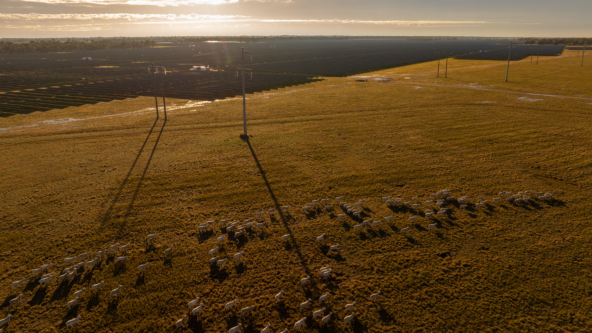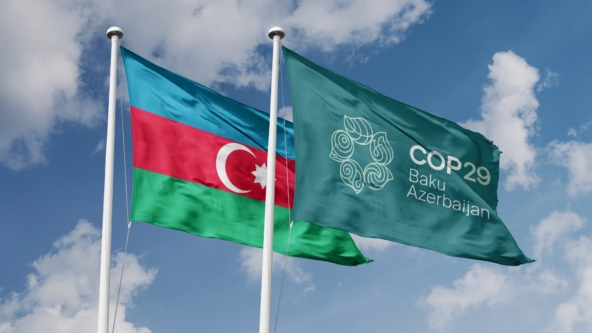Australia has fantastic wind and solar resources and the transition to an electricity system powered largely be these two renewable energy technologies is well underway. Getting that electricity from the sunniest and windiest spots to where, and when, the power’s needed is the main challenge at the moment. It’s a big country and the power may need to travel long distances on a power grid built for a world before renewable energy where most electricity came from coal fired powers stations near cities. In this blog we reflect on our experiences at Octopus Australia in managing this challenge on behalf of our investors.
1. Thorough analysis is needed with a sound knowledge of electricity physics
Electricity seems simple and universal access on demand is often taken for granted. We plug our appliances in and flick a switch and it works – it’s instantly available in nearly every building across the country and extremely reliable – very rarely does the system fail to deliver the power we need. It’s a good job that’s the case given it’s increasingly essential to our everyday work and home lives.
Beneath the surface there’s plenty of complex physics for generators, network providers (the poles and wires that get power to our homes) and the market operator to navigate. Every second of every day generation and consumption must be co-ordinated with technical characteristics of the electricity grid (frequency, inertia, voltage, harmonics, reactive and active power) carefully managed in real time so that it all works as we expect. We’ll call this bundle of technical requirements ‘power quality’.
Renewable energy projects connecting to the power grid offer modern technologies to assist this, but of course do pose a challenge at the same time – the generation varies with the weather so output will always naturally fluctuate.
Complex studies are required to assess how each project will interact with the local grid – specialist skills and experience is required. Our investment into the Darlington Point Solar Farm in Australia is our 161st solar investment, so we’ve had plenty of practice!
2. The technologies to solve this problem exist, but some policy and market reforms are needed to unlock their potential.
Just like the power grid – the rules and regulations governing how electricity is generated were designed for a different world where coal dominated. They are no longer fit for purpose. Like many industries technology is driving change in electricity generation faster than many anticipated. It’s a race to keep up. Without getting too stuck into dark corners of electricity physics, there are two main challenges:
- Storage solutions are needed to ensure that power from the sun and wind can be stored until it’s needed, and the grid doesn’t get overloaded. In Australia lithium-ion batteries (the same as your phone, just much bigger!) are the leading technology, but pumped hydro (two reservoirs, pump up when it’s windy and sunny, release and generate when it’s not) is also a promising candidate. Prices are falling rapidly and new technologies are on the horizon too. The challenge is creating markets that ensure providers of storage can earn a reasonable return, and regulatory structures to allow optimum combinations of solar, wind and storage projects to be built. The Australian Energy Market Operator (AEMO) does recognise this and we’re encouraged to see them pressing on with the necessary changes. 400 pages of new rules due out mid-December so there’s no danger of the Octopus team battling with boredom over the Christmas holidays!
Managing power quality. Renewable energy sources bring new challenges to the grid here but fortunately they also offer solutions. The equipment that gathers the solar and wind power (generated as direct current or DC power) and converts this into alternating current (AC power) can also help manage power quality. Some of the solutions are new and relatively untested and AEMO have to date tended to rely on older technology: As part of building Australia’s largest solar farm in New South Wales, we’ve been asked to install two ‘synchronous condensers’ – giant spinning turbines that help with power quality. They’ll do the job but this is 1950s technology – the clue’s in the weight: They are [77] tonnes each! AEMO are starting to look to the future and we’re working with them on two fronts to assist here: an exciting trial battery project at Darlington Point solar farm to prove the new technology works and a novel technology we’ve developed in Europe to measure power quality in the grid.
3. You need to actively manage your investments – these are not ‘set and forget’ assets!
Solar and wind generation technologies are rapidly taking over electricity generation systems worldwide. Clean, proven technologies that have no fuel costs offer an attractive proposition to policymakers, investors and electricity consumers. Cost was the final barrier – they were more expensive than alternative fossil fuel-based generation sources but no longer, so continued rapid expansion is inevitable.
A solar investment can look deceptively simple. Put some solar panels in a field, plug it into the grid and collect the cash as it comes in! This works to a degree and that’s a big part of the appeal, but the secret to success lies under the surface, especially in a market like Australia where the size of the country, the grid, and the pace of change amplify some of the complexities. Market reforms will create opportunities, but greater sophistication will be required to capture them. Australia will bring in 5 minute market settlement intervals shortly (currently 30 minutes) and new markets to reward flexible power generators offering power quality enhancements. New technologies together with hands on active management, trading and optimisation on a daily basis will win. Passive strategies, set and forget, will get left behind.
We’re working hard to be at the cutting edge. Our innovation fund in Australia puts us at the forefront of new developments and helps to grow the Australian businesses coming up with world leading solutions. We have a dedicated team of 12, soon to be 13, renewable energy specialists here in Melbourne supported by 60 renewables experts in London. A wealth of experience and knowledge compiled through funding 250 renewable energy projects in the last 9 years. Deep immersion in these technologies increasingly offers an advantage – we’ll be diving in to the next 400 page report from AEMO with relish, hunting down those fresh opportunities for our investors!


